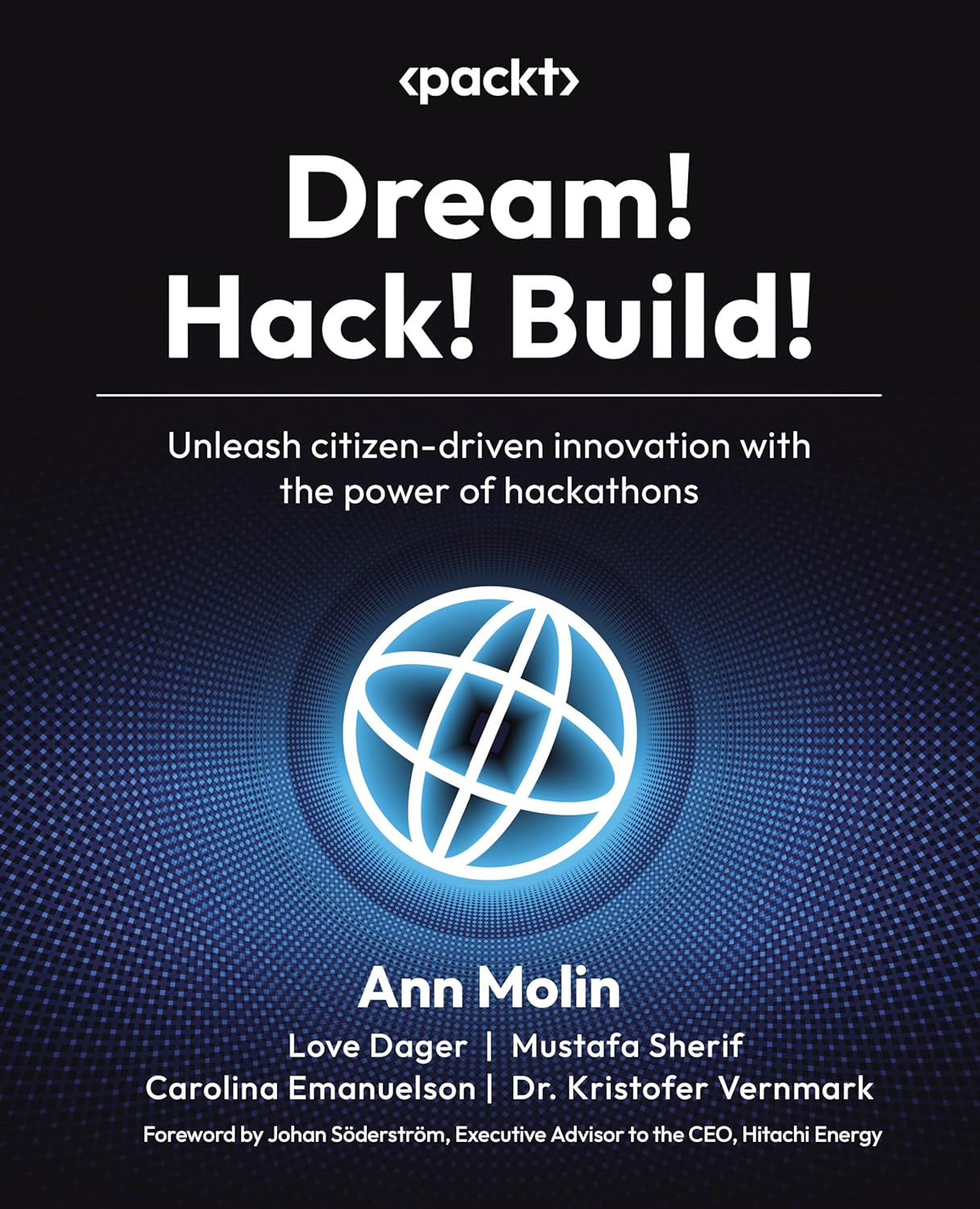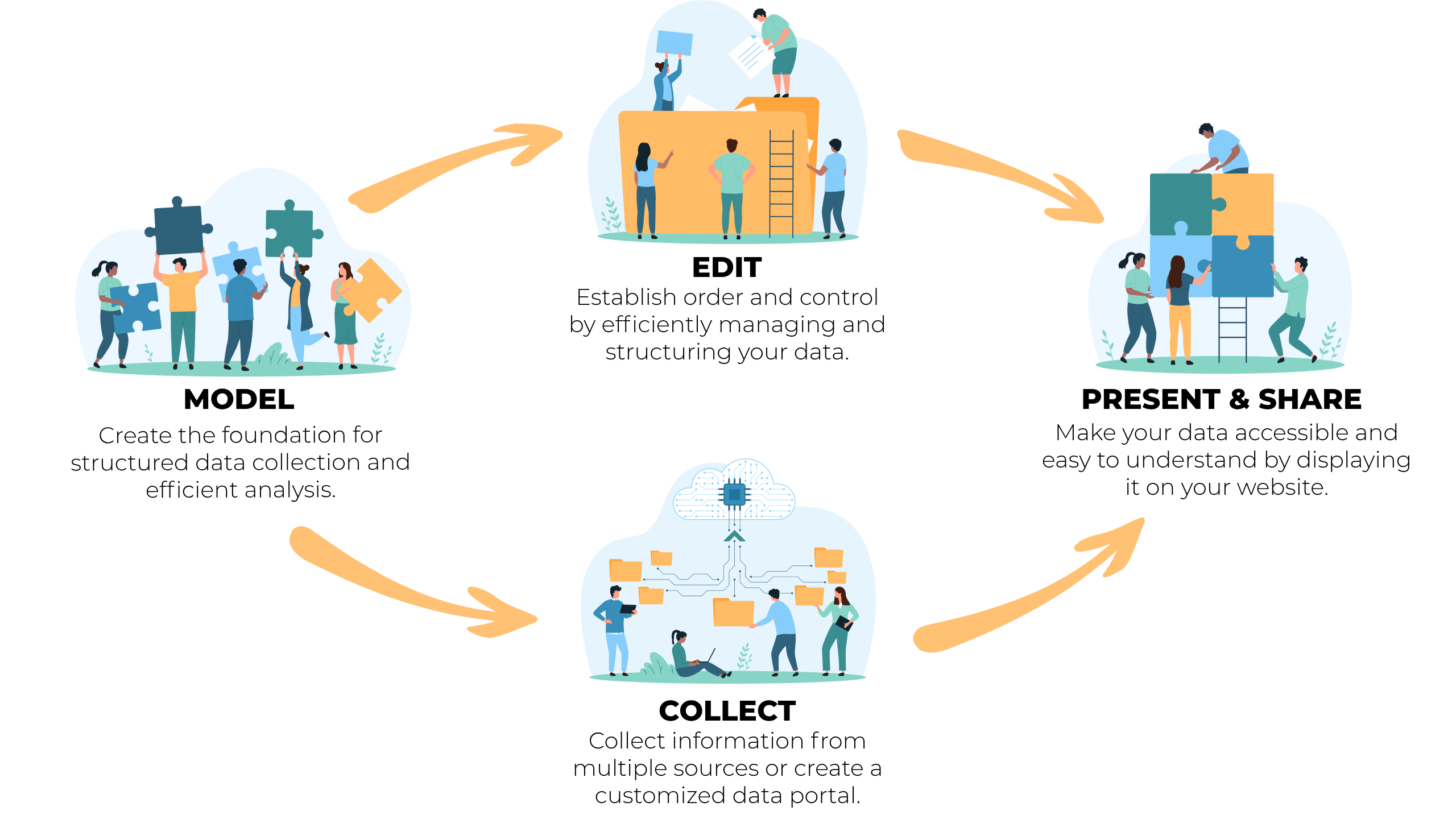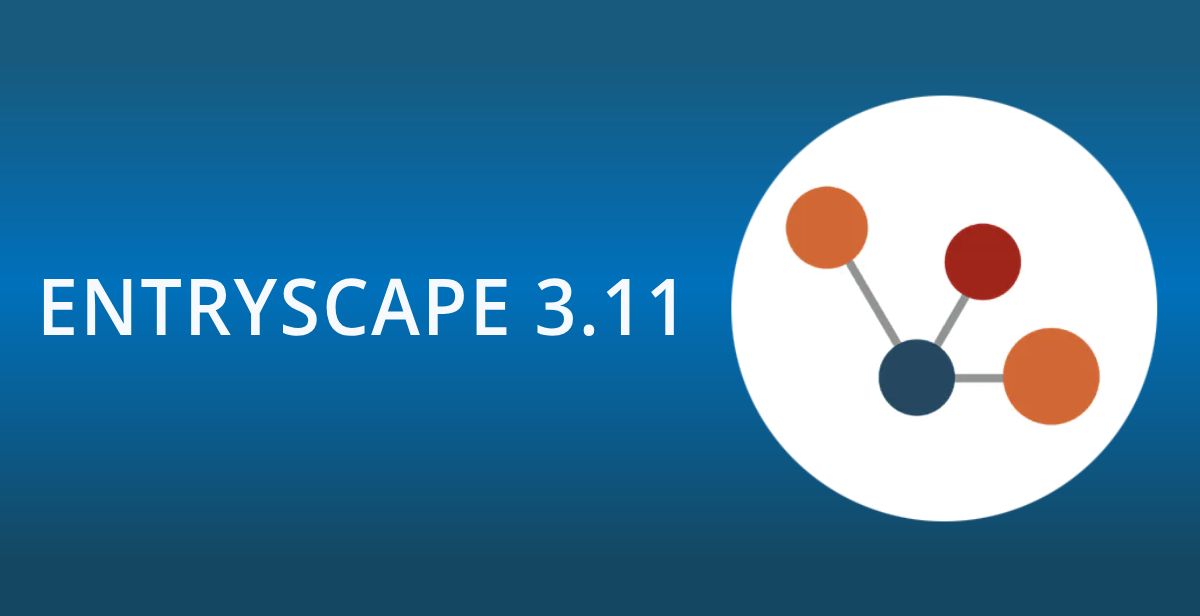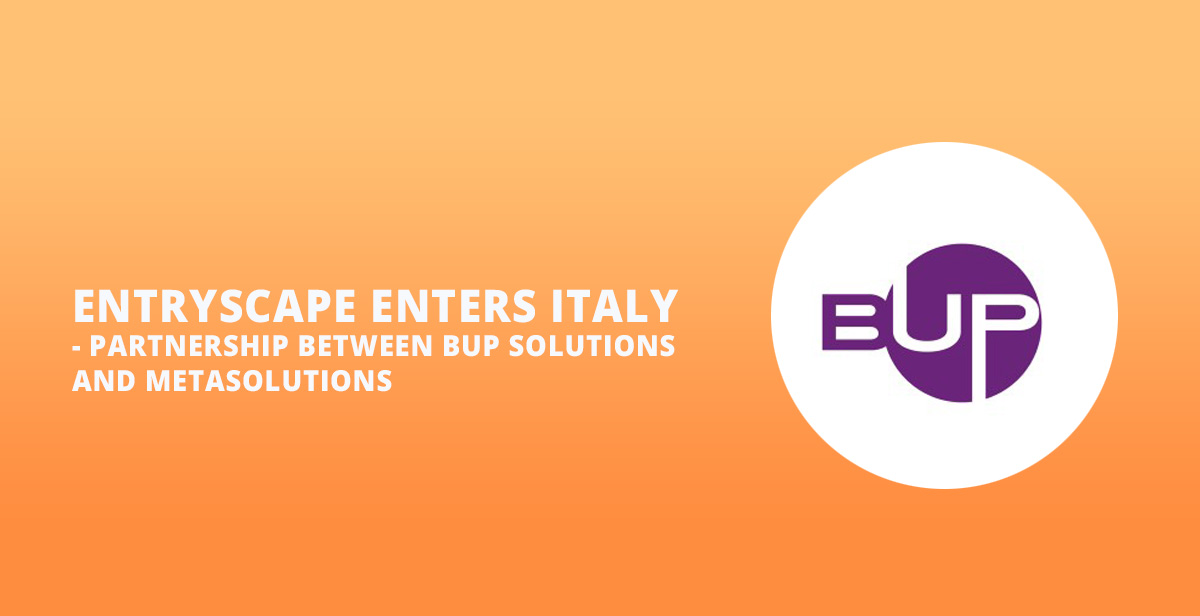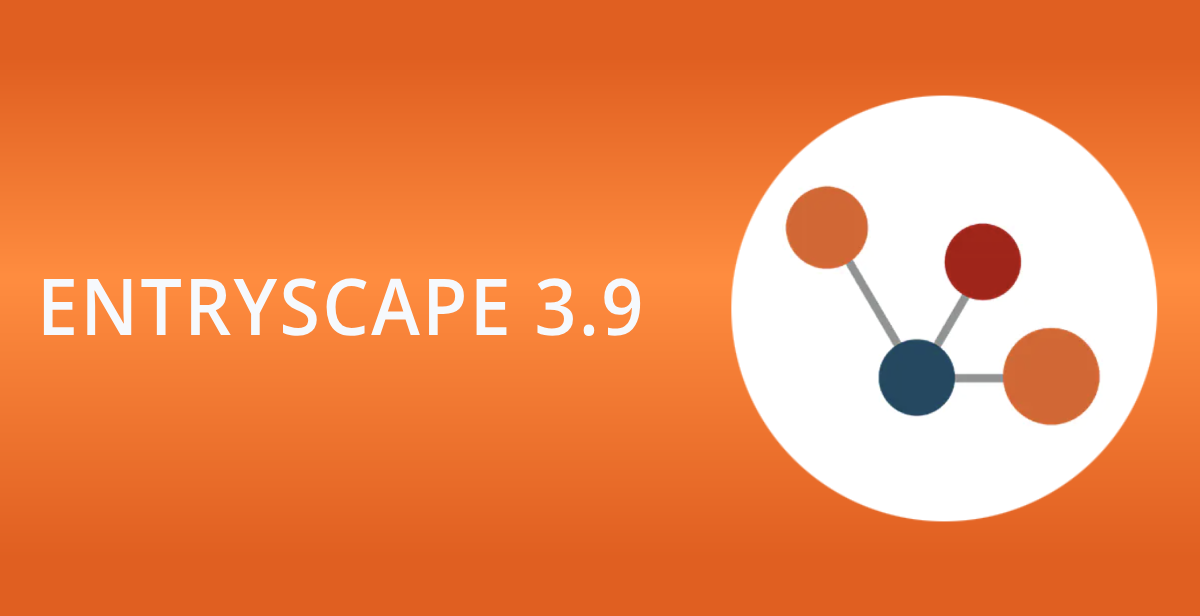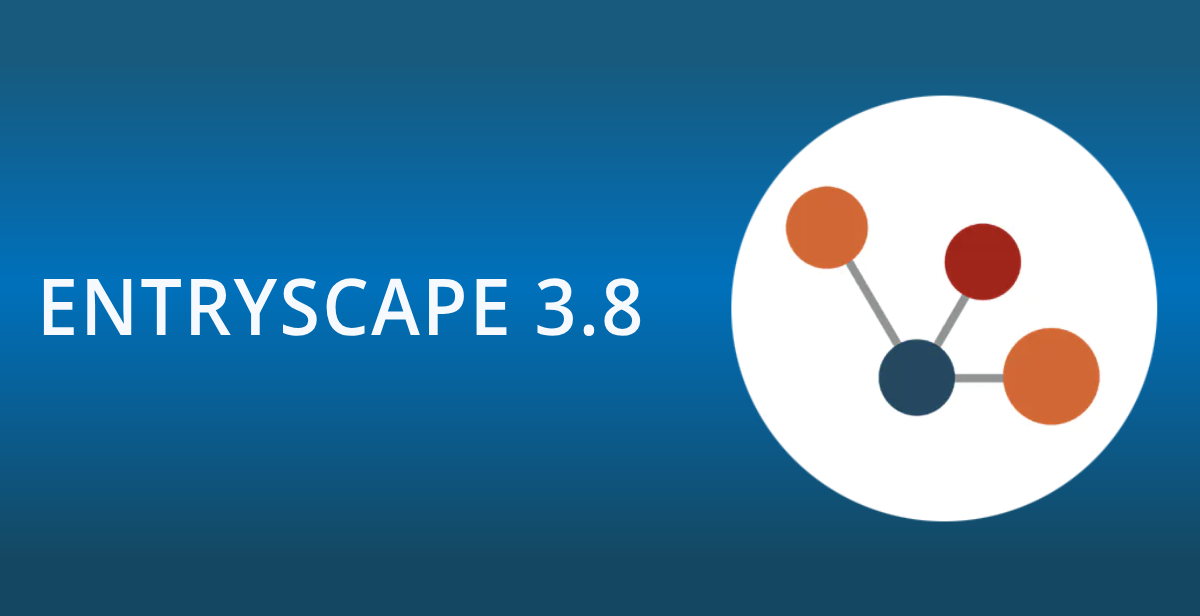“Dream! Hack! Build!” is the new published book that explains the revolutionary nature of hackathons as a method of innovation. One of the authors is Ann Molin, founder of the Hack for Earth Foundation, which organizes annual global hackathons. By bringing together diverse teams and using open data, they find solutions to everything from climate challenges to social issues.
It was while working on the government’s Hack for Sweden project that Ann Molin began the work that has now evolved into the well-known Dream-Hack-Build method, a method based on collaboration and creativity in which people work together for a short period of time to create concrete solutions to current problems. Ann Molin describes hackathons as fundamentally about combining different perspectives and using open data as a kind of building block to quickly create solutions that actually make a difference.
– Open data are clearly the building blocks of future innovation, says Ann Molin.
Do you want to read this text in Swedish? – Click here!
The term “hackathon” began to be used about 25 years ago in the open source movement and emerged in the context of computer gatherings such as demo parties and LAN parties in the 1990s. The word comes from a combination of “hack” – to program in an exploratory way to solve problems – and “marathon,” which refers to doing so over an intense period of time, usually about 24 to 48 hours. Soon, both small and large technology companies began using hackathons to effectively address internal challenges, and the concept has since spread far beyond the tech world. Today, hackathons are an established tool in many organizations to quickly find creative solutions to a variety of problems and challenges.
– We use hackathons well in Sweden, but they are best in Finland and India. There I never have to explain what they are. In India, there is even a minister in charge of hackathons, says Ann Molin.
Open data offers solutions to real problems
Open data is a key component of successful hackathons. By making data available, communities, governments, and businesses create building blocks that innovators and citizens can use to understand and solve societal problems. The more data available, the more effective hackathons will be.
Learn more about open data here!
– It is the availability of relevant and timely data that allows us to build solutions that are connected to real problems. When communities and governments make their data available, we can create solutions that are directly related to people’s daily lives and society’s needs, says Ann Molin.
Share This Story, Choose Your Platform!
The book “Dream! Hack! Build!“ highlights several impressive examples created through hackathons. Among them is BrightAct, which was born out of a hackathon in 2020. The idea came from the founders, who were able to identify major gaps in how organizations were working together to support people experiencing domestic violence. Together, they created a data-driven solution that combines resources from the public sector, civil society, and academia to make community support more accessible and effective for those who need it most. Today, BrightAct has expanded beyond Europe to serve as a global safety net for people in violent relationships.
Hack for Earth tackles global climate challenges
In 2021, Ann Molin founded the Hack for Earth Foundation. The foundation’s goal is to develop solutions to the UN’s global sustainability goals through large-scale global hackathons. Each year, a major global hackathon is organized with participants from around the world. The next major global hackathon will take place during the World Expo in Osaka in 2025.
– The interest to participate is huge! And some big names are taking part. At COP28, for example, Ericsson was the main sponsor.
In addition to the foundation, Ann Molin also runs the company Hack for Earth.
– I have had so many requests to see if we could help organize other hackathons, that we felt the need to start this company so that we could also sell hackathon services. A foundation cannot be a for-profit organization, explains Ann Molin.
A practical guide for companies and organizations
“Dream! Hack! Build! provides readers with the insights and tools they need to organize a hackathon themselves. The book is aimed at leaders and decision-makers who are looking for concrete tools to address organizational challenges and create engagement in their teams.
– A hackathon creates a direct link between participants and organizational goals. It is a powerful experience that can strengthen both the brand and the relationships in the organization, says Ann Molin.
A successful hackathon follows the three steps in the book’s title. In the dream phase, visions and ideas are gathered from different directions. Here, people are invited to share their dreams and suggestions, giving the hackathon a clear direction and ensuring that the challenges to be solved reflect real needs and current issues.
The hack phase is the hackathon itself. Here, participants are divided into teams that work intensively on the prepared challenges for a short, intensive period of time. Among other things, the book provides tips on how to build an effective team where members complement each other’s strengths and skills to achieve the best results.
Finally, there is the Build phase – one of the most important parts, according to Ann Molin. She says that this phase was a big reason why she started the Hack for Earth Foundation. During her years in Hack for Sweden, she sometimes felt frustrated that the good ideas that won were not helped to get off the ground after the hackathon was over.
– It’s about harnessing the power of innovation. It was so frustrating to see all the great ideas that came out of our hackathons and not be able to support their further development. But with the foundation, I can do it my way.
The foundation’s global hackathons are tied to an accelerator program that provides six months of support for winning teams. During the program, participants receive training in business development, leadership, team building, pitching techniques, and building partnerships, giving them the tools they need to turn their ideas into reality and increase their chances of surviving as a business.
Hackathons and open data in city government
Ann Molin sees great potential for hackathons and open data in the public sector, especially at the municipal level. By using local data, municipalities can get help from their citizens to find solutions to local, specific problems, such as traffic planning, environmental improvements, and social security.
Södertälje Municipality and Gävle Municipality are examples of municipalities that have used hackathons to gather ideas from both citizens and officials on how to improve the city.
– If more municipalities dared to use hackathons and make their data available, they would not only find quick solutions, but also create greater engagement with residents. Inviting citizens to hackathons and giving them access to relevant data makes them feel part of the development of society, concludes Ann Molin.


